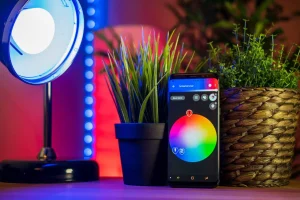Understanding Beauty of Function: Beyond Aesthetics
We’ve all been there. You buy something that looks incredible—a sleek kettle, a futuristic-looking can opener, a gorgeously designed app—only to find it’s a nightmare to actually use. The handle gets too hot, the blade slips, the interface is a confusing mess. It’s frustrating. It’s a betrayal of the promise its appearance made. This is the exact opposite of what I’ve come to value most in the world around me: the profound, satisfying, and often overlooked elegance of things that simply work perfectly. This journey into the core of how things are made and for what purpose is the essence of understanding beauty of function.
Unveiling the Essence: What is the Beauty of Function?
It’s a concept that sidesteps the superficial. It’s a deeper appreciation for an object or system, not for its ornate decoration, but for its intelligent and efficient execution of its purpose. It’s the silent hum of a well-oiled machine, the intuitive layout of a website, the comfortable grip of a perfectly weighted tool. This isn’t about shunning traditional aesthetics; it’s about expanding our definition to include grace in operation. Some might say this is the key to understanding the true definition of beauty itself.
Beyond Surface Aesthetics: Defining Functional Elegance
Functional elegance is the sweet spot where an object’s form is so perfectly aligned with its purpose that the two become inseparable. Think of a paperclip. It’s nothing more than a bent piece of wire, yet its design is so flawless for its task that it hasn’t changed in over a century. There’s no superfluous decoration. Nothing is wasted. Every curve, every loop, has a reason for being there. That is functional elegance. It’s a design that achieves its goal with the least amount of friction or complexity. It’s an honest design. It doesn’t pretend to be something it’s not. Its beauty comes directly from its utility, which is a core part of the philosophy of functional beauty.
The Interplay of Purpose and Appeal
So, how does purpose create appeal? It happens when you truly grasp what a thing is for and how it achieves its end. A racing bicycle, with its impossibly thin frame and aggressive angles, might not look pretty in a classical sense. But when you understand that every single element is obsessively engineered for speed and lightness—that the strange shape of the handlebars is for optimal aerodynamics and rider comfort over hundreds of kilometres—it transforms. It becomes beautiful. Suddenly, you’re not just seeing a bike; you’re seeing a solution to a problem. You’re seeing speed, efficiency, and human ingenuity embodied in carbon fibre. The aesthetics of efficient systems reveal themselves not to the passive eye, but to the inquisitive mind. This shift in perspective is key to the understanding beauty of function.
Nature’s Masterclass: Functional Beauty in the Natural World
If you ever want to see functional beauty in its purest form, just look outside. Seriously. Nature is the undisputed master. For billions of years, evolution has been the ultimate research and development lab, relentlessly refining designs through the unforgiving process of natural selection. The results are organisms and ecosystems that are breathtakingly efficient and perfectly adapted to their environments. There’s no ego in nature’s design. It just works.
Biomimicry: Learning from Nature’s Ingenious Designs
Humans are finally catching on. We’ve started to formally study and copy nature’s genius in a field called biomimicry. The whole concept is a testament to the beauty of biomimicry in design. The hook-and-loop fastener, Velcro, was famously inspired by the way burrs stuck to a dog’s fur. The nose cone of a Japanese bullet train was redesigned based on the shape of a kingfisher’s beak to reduce noise and increase efficiency when exiting tunnels. We look at the complex, self-cooling structures of termite mounds to inspire sustainable architecture. By studying these beautiful creatures and their ecosystems, we are learning what defines functional beauty from the greatest designer of all.
The Efficiency of Evolution: Form Follows Function in Organisms
In nature, aesthetics are a direct byproduct of survival. A shark is shaped for hydrodynamic perfection because it needs to be a ruthlessly efficient predator. A sunflower’s seeds are arranged in a Fibonacci spiral not to be pretty, but because it’s the most efficient way to pack the maximum number of seeds into a circular head. This is the rawest demonstration of form follows function principles. Anything that is inefficient, that wastes energy, or that doesn’t serve a purpose is eventually discarded by evolution. What remains is a gallery of perfect, functional art, providing endless inspiration for anyone seeking a deeper understanding beauty of function.
Engineering and Design: Where Innovation Meets Grace
Moving from the natural world to the human-made one, we see the same principles at play. The best engineers and designers are artists of a different sort. Their medium isn’t paint or clay; it’s physics, materials, and logic. They wrestle with constraints—budgets, materials, physical laws—to create solutions that are not only effective but can sometimes be breathtakingly elegant. For them, a beautiful solution is one that solves a complex problem in a simple, clever way.
The Allure of Simplicity: Minimalist Design Principles
There’s a reason why so many of us are drawn to minimalist design. It’s not just a trend. It’s a deep-seated appreciation for clarity and purpose. When you strip away all the non-essential elements, what’s left must be perfect. The philosophy that simplicity is beautiful in design argues that extra buttons, unnecessary graphics, and confusing layouts create cognitive load. They are a form of visual noise. A truly great design, whether it’s a Dieter Rams radio for Braun or the user interface of a modern app, presents only what is necessary. It’s confident. It doesn’t need to shout for attention with flashy gimmicks. Its quiet competence is its most beautiful feature. This approach is a cornerstone of understanding beauty of function.
Problem-Solving as an Art Form: Ingenious Mechanisms
I once had a cheap, clunky can opener that was a daily source of minor rage. It would slip, leave sharp edges, and just felt awful to use. Then I bought a Zyliss safety can opener. The difference was night and day. It glides around the rim with no effort, it never touches the food, and it leaves a smooth, safe edge. The internal mechanism that achieves this is a masterpiece of problem-solving. It’s a small, mundane object, but using it brings a tiny spark of joy. That is the beauty of function in action. It’s the satisfying click of a well-made latch, the clever folding mechanism of a Brompton bicycle, or the elegant algorithm that suggests the perfect next song. These are all examples of beauty in engineering function, and they elevate our daily experiences.
The Human Element: Functional Beauty in Thought and Creation
This appreciation for functional elegance isn’t limited to physical objects. It extends into the abstract realms of our own minds and the systems we create. The way we think, organize information, and structure our societies can also possess this particular kind of beauty. It’s about finding the most efficient, logical, and graceful path to a solution.
A Beautiful Mind at Work: The Elegance of Cognitive Processes
Have you ever watched an expert at their craft? A chef who moves with effortless precision, a programmer who writes clean, efficient code, or a mathematician who devises a simple proof for a complex theorem? There is a profound beauty in that efficiency of thought and action. It’s the opposite of clumsy, brute-force effort. It’s about seeing the underlying structure of a problem and navigating it with grace. This appreciation for the inner workings of a beautiful mind is just another facet of the same principle. The elegance of cognitive processes is functional beauty manifested as thought. This shows the incredible depth of a complete understanding beauty of function.
Everyday Objects: Appreciating Unsung Design Heroes
Let’s get practical. How to appreciate functional design in your own life? Start by noticing the little things. The zipper. The ballpoint pen. The light switch. These objects are so ubiquitous and so perfectly functional that they’ve become invisible. We take them for granted. But each one represents a brilliant solution to a common problem. The next time you use a perfectly balanced kitchen knife or sit in a chair that supports you in all the right places, take a second. Pause. Think about the hundreds of tiny decisions that went into its creation. Appreciating these unsung heroes transforms the mundane into a world of constant, quiet marvels and deepens your personal understanding beauty of function.
Cultivating Appreciation: Seeing the Beauty in How Things Work
Developing this sensitivity is like training a new muscle. It doesn’t happen overnight. It requires a conscious shift in perspective, moving from a passive consumer to an active observer. You have to start asking “why.” Why is this shaped the way it is? What problem does it solve? Could it be done more simply? This curiosity is the gateway to a richer experience of the world.
From Observation to Inspiration: Developing a Keen Eye
Start by observing. Whether you’re in a hardware store, a museum, or just your own kitchen, look for the intelligence behind the objects around you. Appreciate the satisfying “thunk” of a well-made car door. Notice the intuitive design of a road sign. When you find something that delights you with its functionality, try to figure out what makes it great. This active observation can be a powerful source of inspiration, as highlighted in many inspirational beauty quotes that celebrate substance over style. It trains your brain to recognize and value elegant solutions, enriching your perspective on what true design excellence means.
The Impact of Functional Beauty on Well-being and Innovation
This isn’t just an academic exercise. Surrounding ourselves with well-designed, functional objects has a tangible impact on our well-being. It reduces friction, eliminates minor frustrations, and instills a sense of calm and order. When things work as they should, our cognitive load is reduced, freeing up mental energy for more important things. For creators, innovators, and problem-solvers, a deep understanding beauty of function is not just helpful—it’s essential. It drives them to create better, more efficient, and more human-centric products and systems, pushing progress and improving lives in meaningful ways. The true beauty of function is its ability to make our world work better.
Conclusion: Embracing a Deeper Understanding of Beauty
To see the world through the lens of functional beauty is to unlock a new layer of appreciation for everything around you. It’s a shift from just looking at things to truly seeing them. You begin to recognize the hidden intelligence in a simple tool, the billions of years of refinement in a bird’s wing, and the quiet elegance of a well-structured sentence. It’s a more resilient and profound kind of beauty, one that doesn’t fade with trends or styles. It’s the beauty of things that are true to their purpose. By embracing this perspective, we not only enrich our own lives but also learn to value the substance, integrity, and quiet genius that defines understanding true beauty in its most authentic form.







